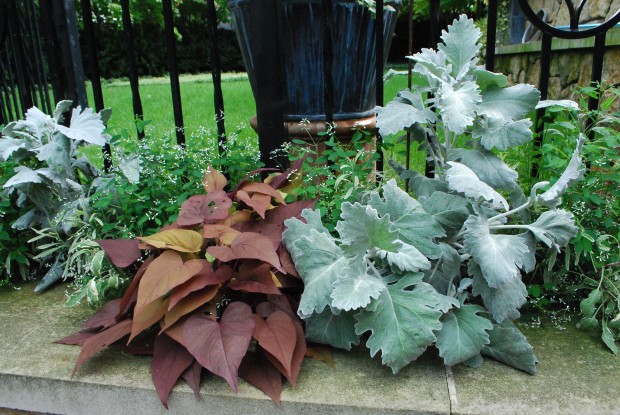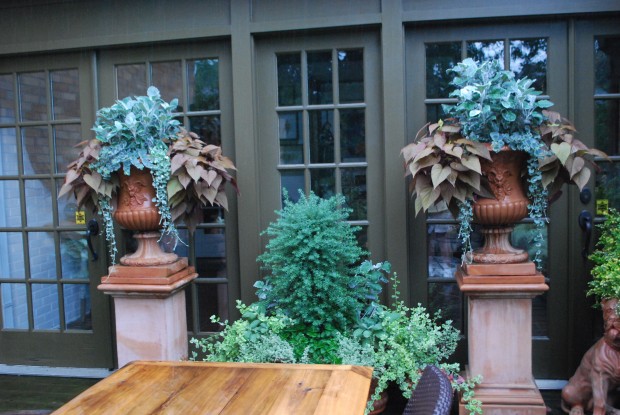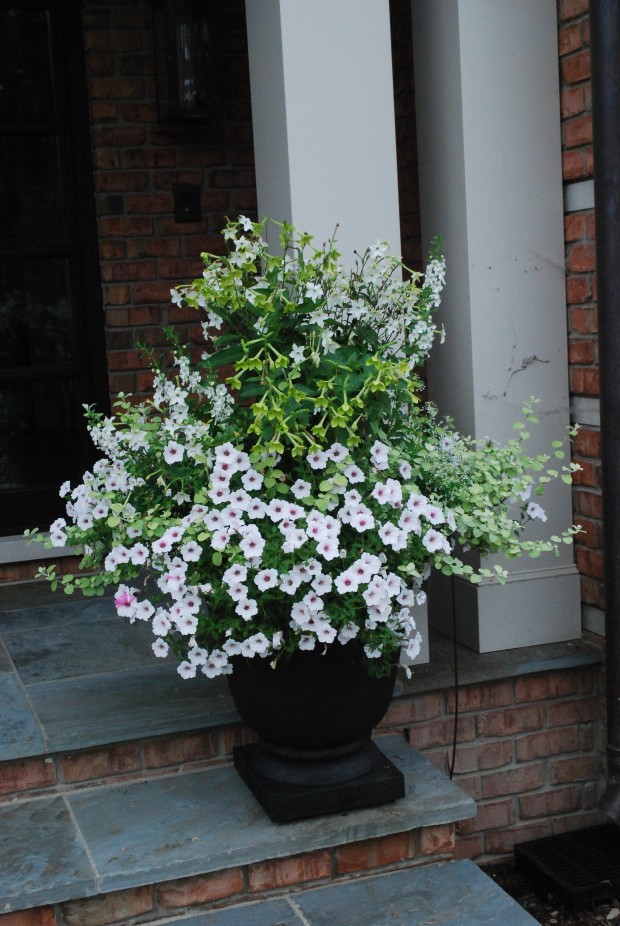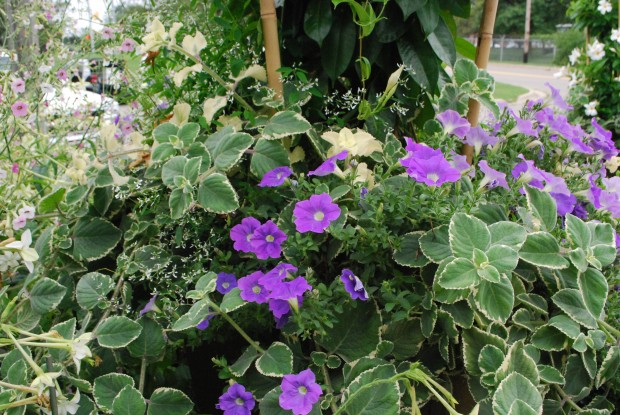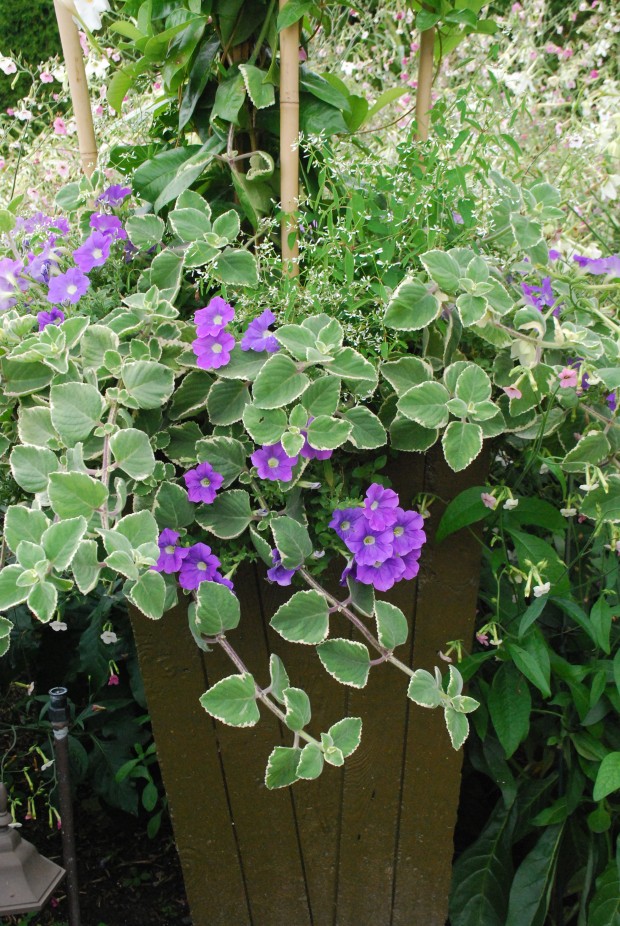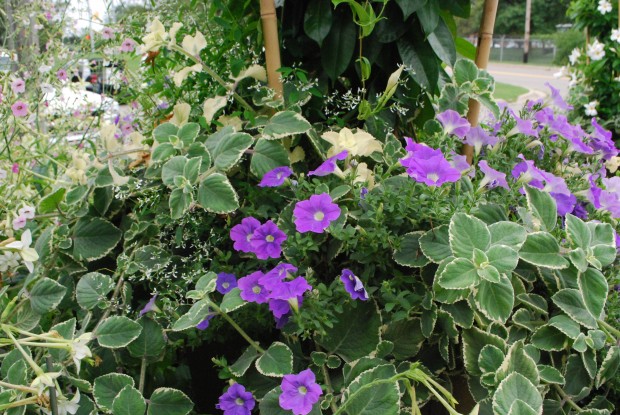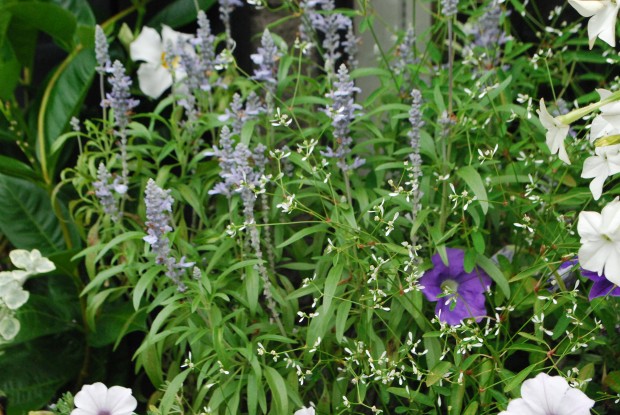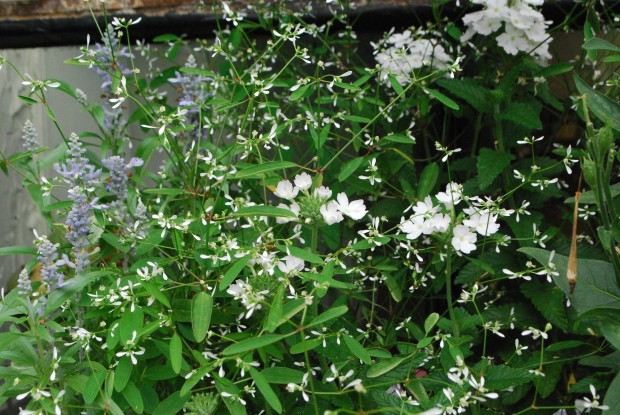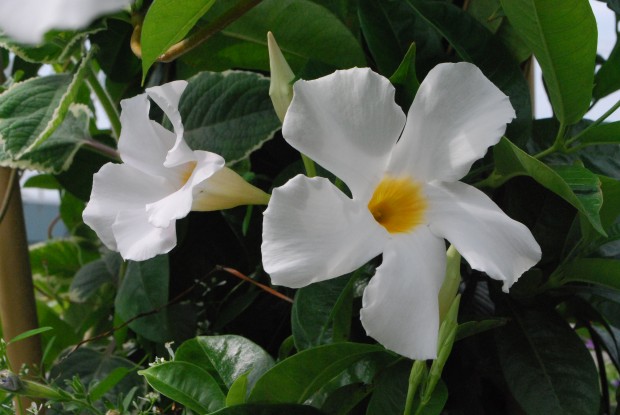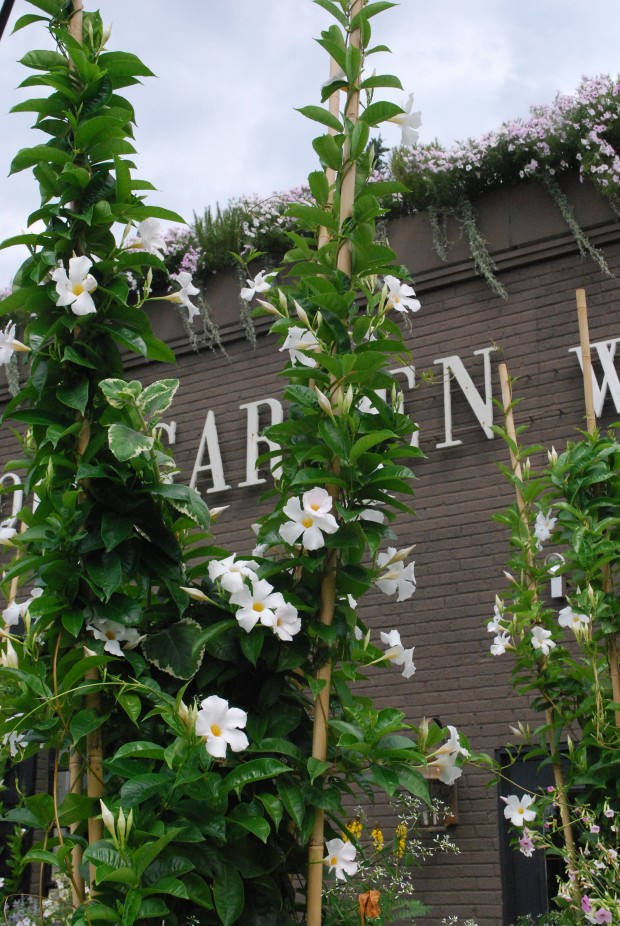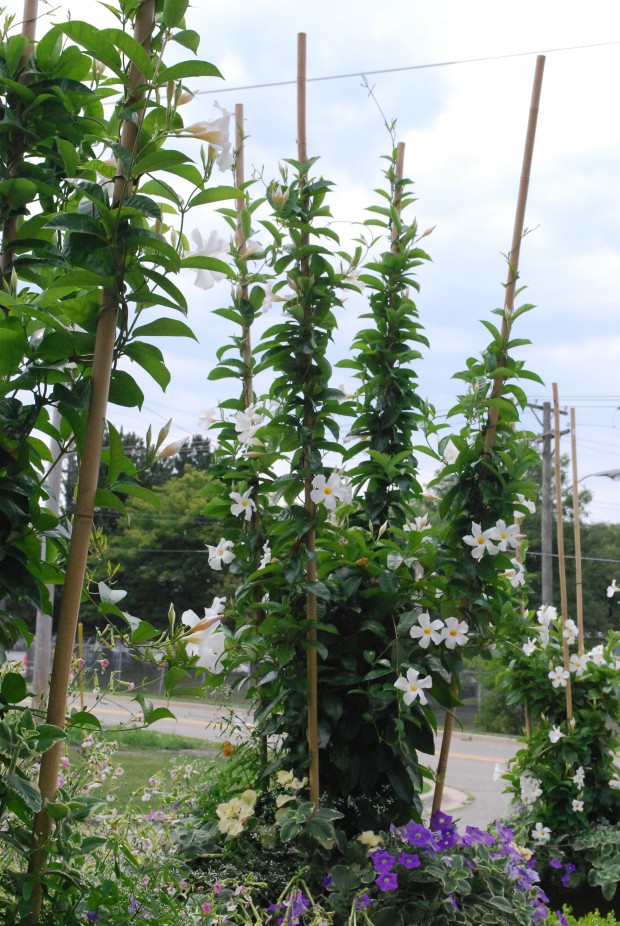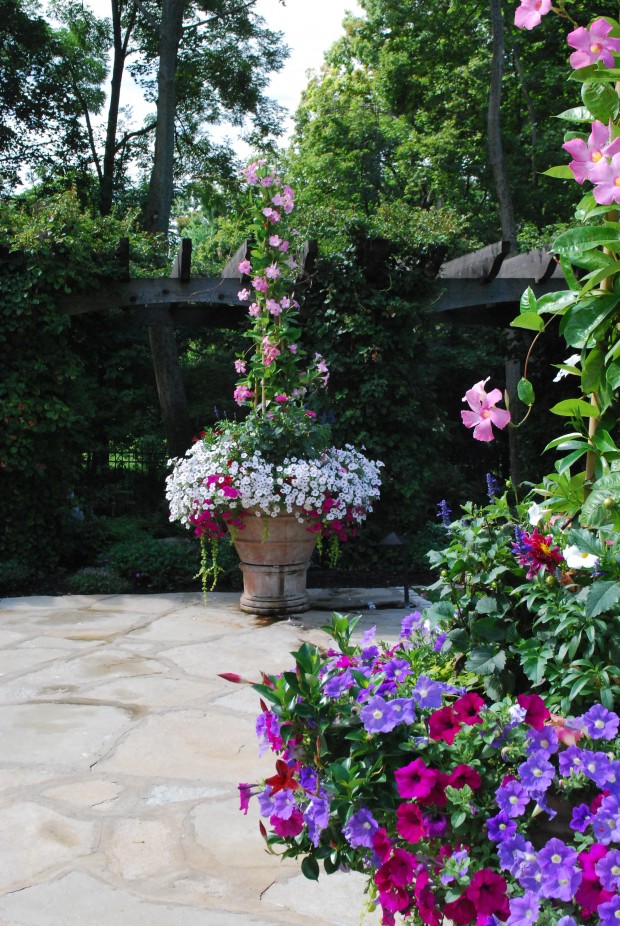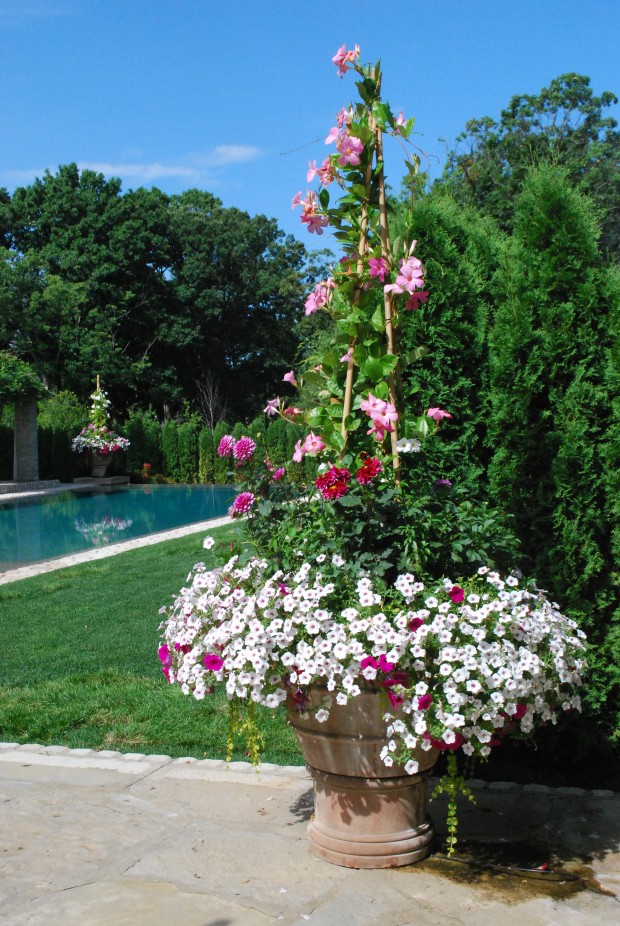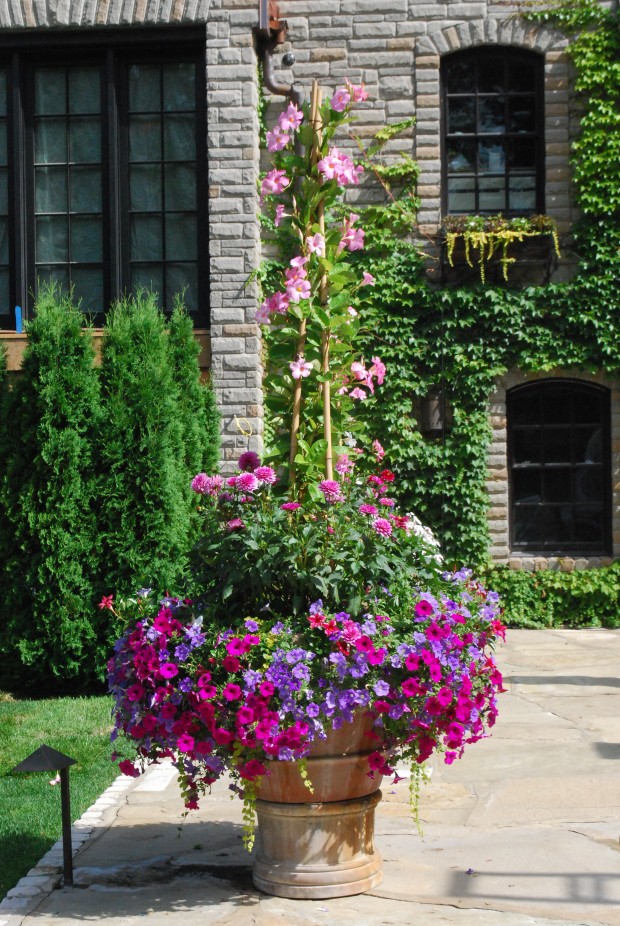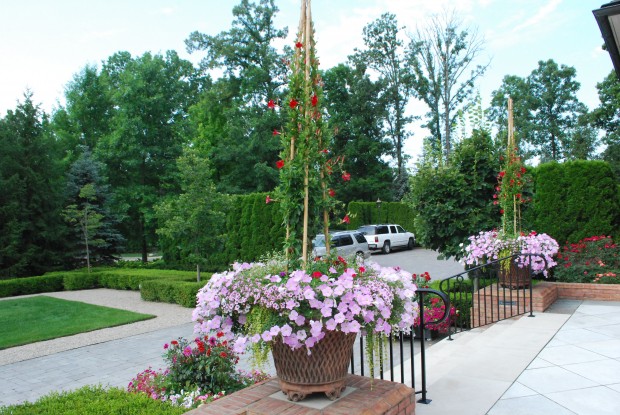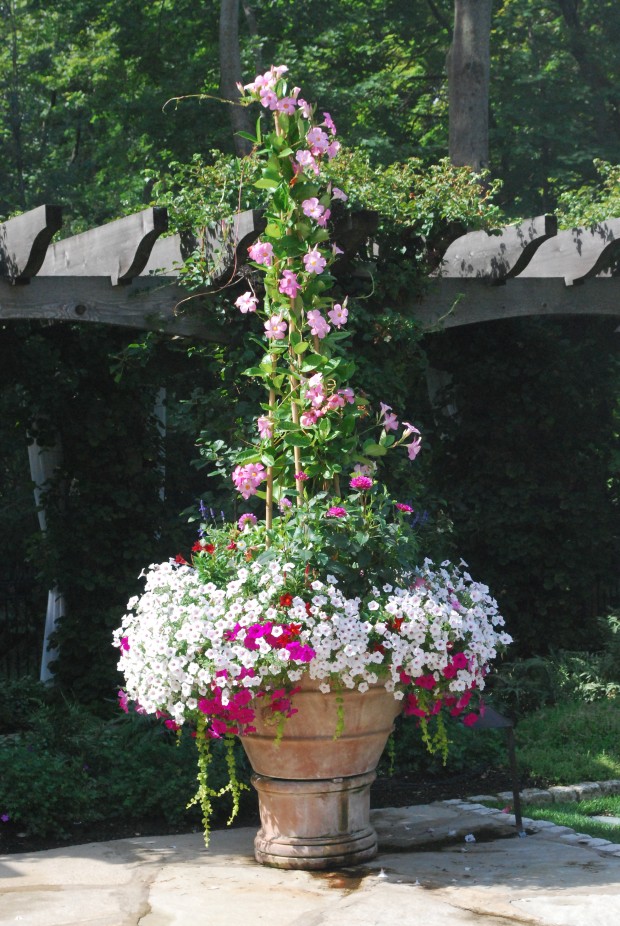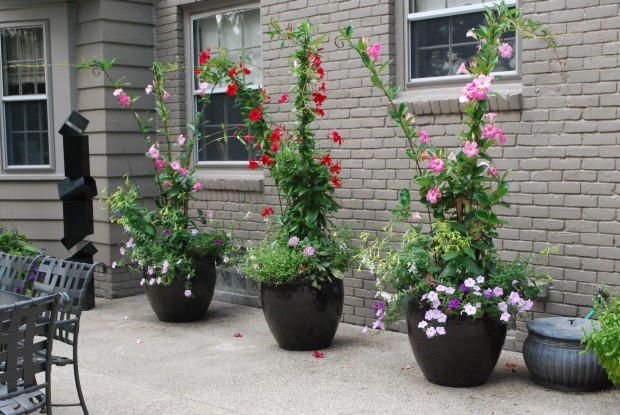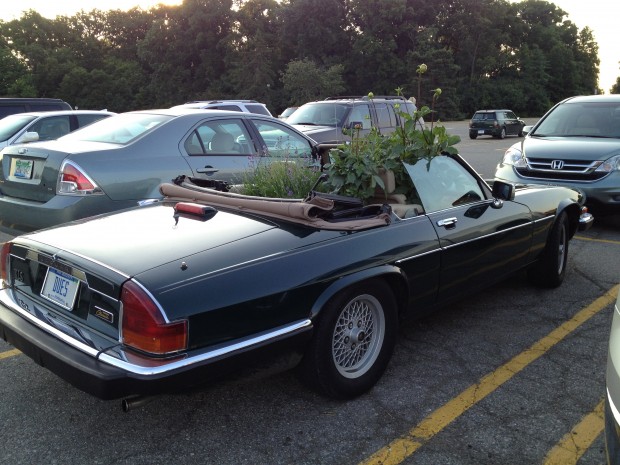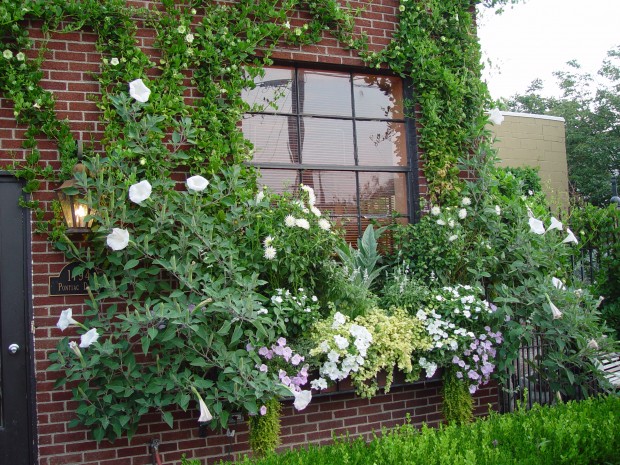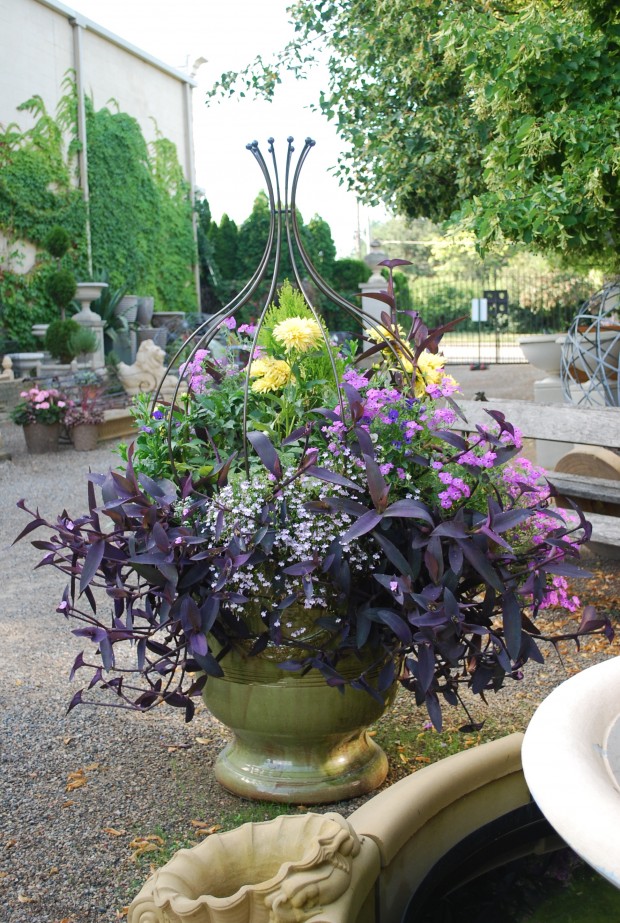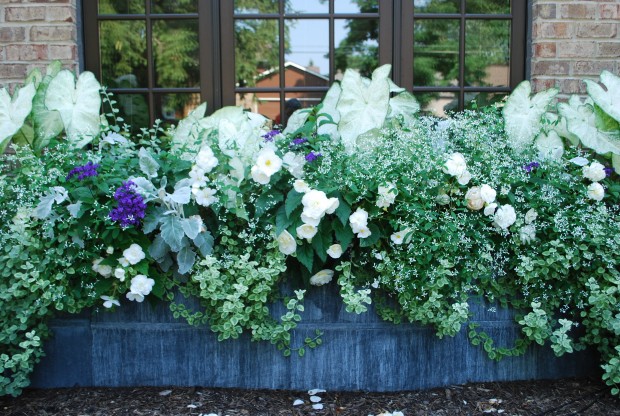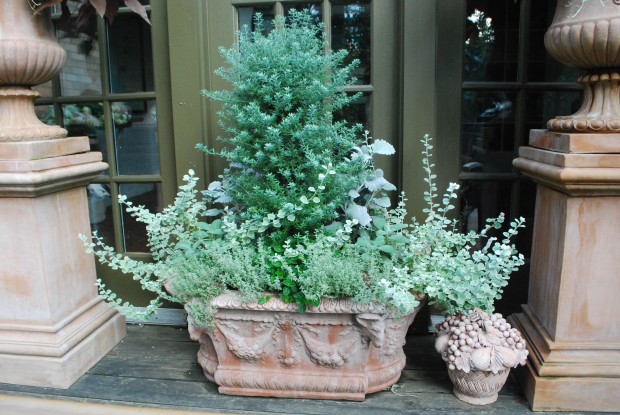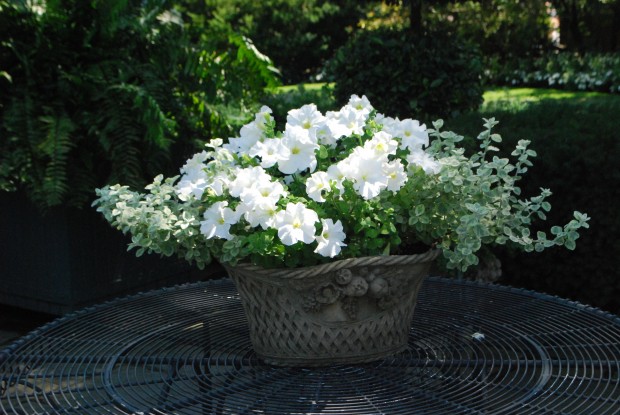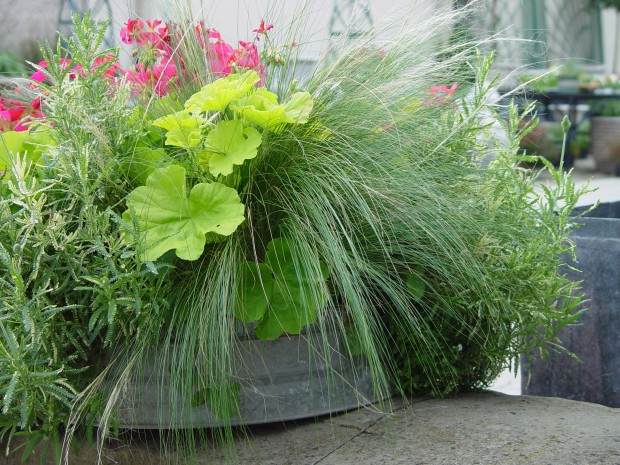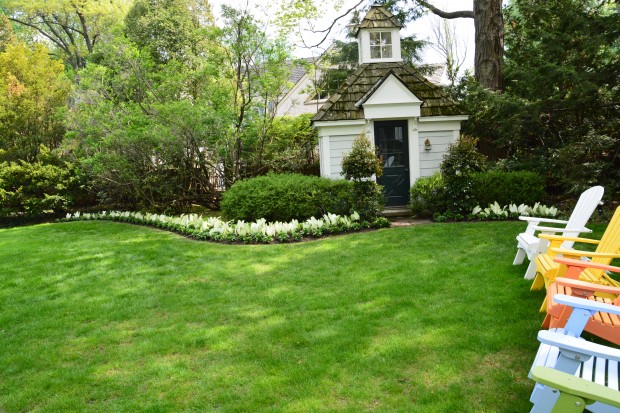 Any seasonal planting begins with an idea. An organizing metaphor. That collection of ideas and the resulting metaphor makes for a story. A story you wish to tell with plants. Plants are one thing, but the plants you choose for a particular container should live together in a meaningful way. The design of in ground annual plantings and container plantings takes many formal design issues into account. Color, texture, mass, line-these are formal elements of design that apply to any creative expression. The deliberately chosen relationships between all of these elements tell a story.
Any seasonal planting begins with an idea. An organizing metaphor. That collection of ideas and the resulting metaphor makes for a story. A story you wish to tell with plants. Plants are one thing, but the plants you choose for a particular container should live together in a meaningful way. The design of in ground annual plantings and container plantings takes many formal design issues into account. Color, texture, mass, line-these are formal elements of design that apply to any creative expression. The deliberately chosen relationships between all of these elements tell a story.
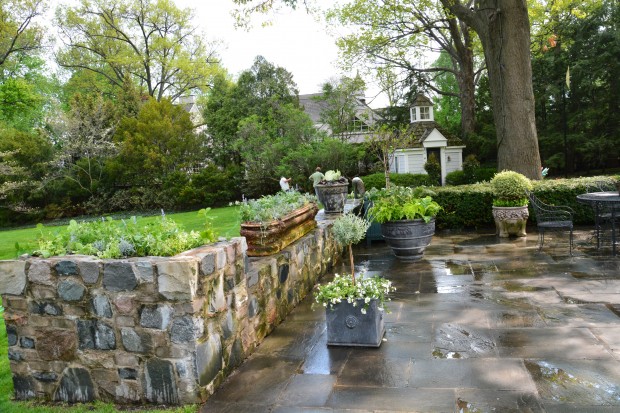 Some containers I plant, the color is the story. Others, the texture and mass is the story. Others echo or repeat a story about loss, or love. Others recreate a moment from the past. Some stories are about joy. Those stories may be on fire. Some stories are pastoral, or a longing for another place and time. Other stories echo a family history. Another story may be about refuge. Some stories have to do with agriculture and farming. Important events have stories attached to them. Some stories are witty, saucy, or funny.
Some containers I plant, the color is the story. Others, the texture and mass is the story. Others echo or repeat a story about loss, or love. Others recreate a moment from the past. Some stories are about joy. Those stories may be on fire. Some stories are pastoral, or a longing for another place and time. Other stories echo a family history. Another story may be about refuge. Some stories have to do with agriculture and farming. Important events have stories attached to them. Some stories are witty, saucy, or funny.
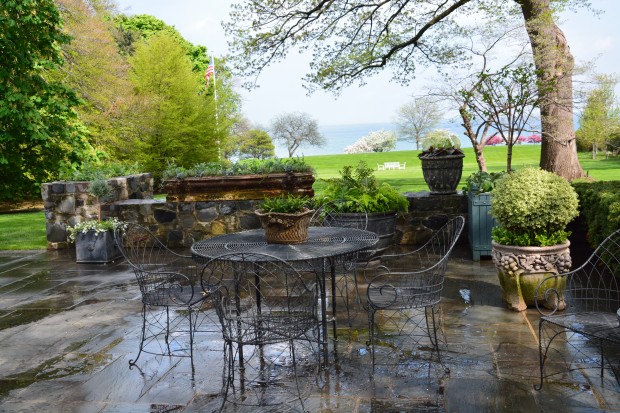 All of my clients have their own particular story. Their likes and dislikes. How they would choose to represent the beauty of a garden is particular to them. For those with whom I have a long history, I plant in service of what I know of their story. I may not be dead to right in every regard, but a client who returns year after year must feel that I hear them.
All of my clients have their own particular story. Their likes and dislikes. How they would choose to represent the beauty of a garden is particular to them. For those with whom I have a long history, I plant in service of what I know of their story. I may not be dead to right in every regard, but a client who returns year after year must feel that I hear them.
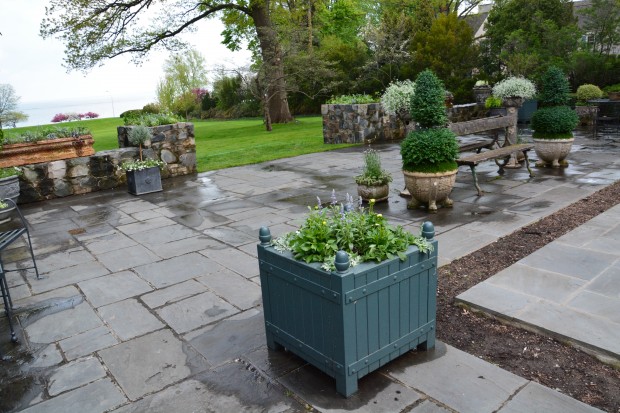 A plant is a thing of wonder in and of itself. But a great container planting is not a collection of plants. It is a community of plants that when planted in a confined space creeate visual and emotional meaning. This client likes green above all. She likes a planting which is serene and quiet. She likes the relationship between old plants of formal shape, and meadow like plantings which include lavender and other herbs. She likes plants that remind her of a conservatory, as in ferns.
A plant is a thing of wonder in and of itself. But a great container planting is not a collection of plants. It is a community of plants that when planted in a confined space creeate visual and emotional meaning. This client likes green above all. She likes a planting which is serene and quiet. She likes the relationship between old plants of formal shape, and meadow like plantings which include lavender and other herbs. She likes plants that remind her of a conservatory, as in ferns.
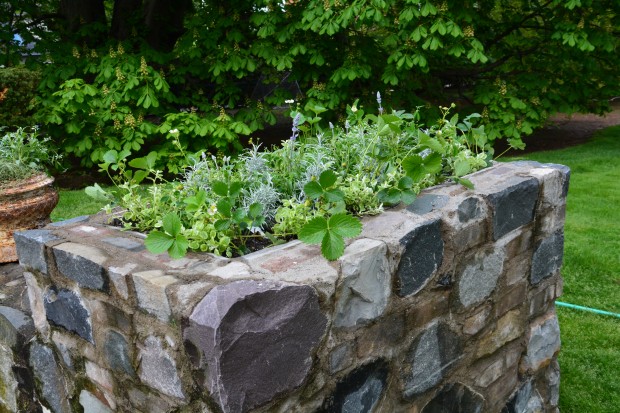 This stone wall/planter has had a lot of things in it over the year. One year, Chicago figs. Another year, white nicotiana. This year we have sky blue Cathedral salvia, icicle helichrysum, variegated licorice, and strawberries.
This stone wall/planter has had a lot of things in it over the year. One year, Chicago figs. Another year, white nicotiana. This year we have sky blue Cathedral salvia, icicle helichrysum, variegated licorice, and strawberries.
 This variegated boxwood also has variegated licorice, as it is near by. And the coloration of the leaves echo one another, and contrast in size and shape. The little pot-a single Spanish lavender plant.
This variegated boxwood also has variegated licorice, as it is near by. And the coloration of the leaves echo one another, and contrast in size and shape. The little pot-a single Spanish lavender plant.
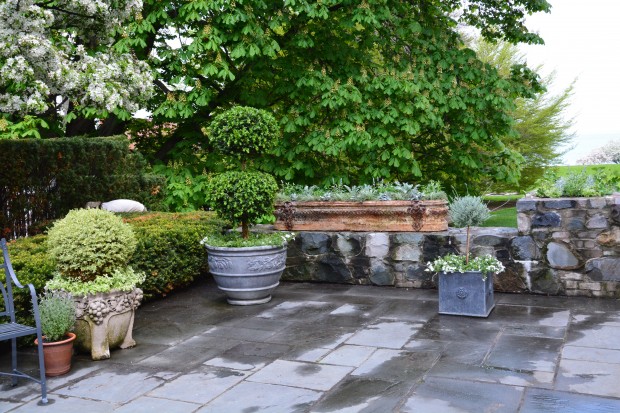 The double ball boxwood topiary in the corner is quite old. The lavender topiary is new, and beginning to bloom.
The double ball boxwood topiary in the corner is quite old. The lavender topiary is new, and beginning to bloom.
 The long troughs have a mixture of blue green leaved plants, and silver leaved plants.
The long troughs have a mixture of blue green leaved plants, and silver leaved plants.
 The pool yard is a little less quiet. A duranta on standard is under planted with surfinia sky blue petunias, and artist ageratum. A rosemary topiary is under planted with a variegated sage. The center pot has 3 elegant feather plants, surrounded by lime green spikes and bicolor angelonia.
The pool yard is a little less quiet. A duranta on standard is under planted with surfinia sky blue petunias, and artist ageratum. A rosemary topiary is under planted with a variegated sage. The center pot has 3 elegant feather plants, surrounded by lime green spikes and bicolor angelonia.
 White lantana on standard, and polka dot plant. The low planters have green echeverias.
White lantana on standard, and polka dot plant. The low planters have green echeverias.
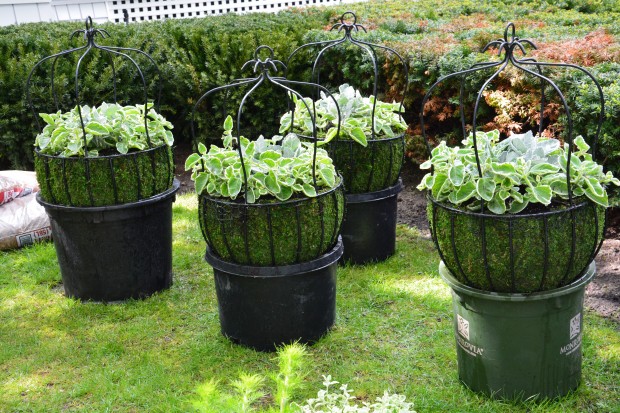 4 hanging baskets for the porch are planted with a white variegated plectranthus, and a gray plectranthus, mixed.
4 hanging baskets for the porch are planted with a white variegated plectranthus, and a gray plectranthus, mixed.
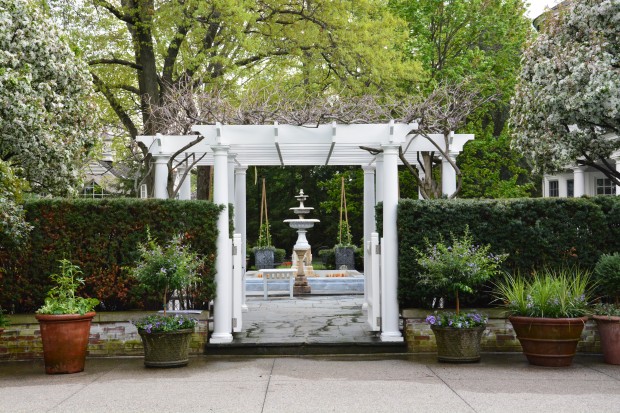 The far pots are planted with white mandevillea, and a host of attending white flowered and gray leaved plants.
The far pots are planted with white mandevillea, and a host of attending white flowered and gray leaved plants.
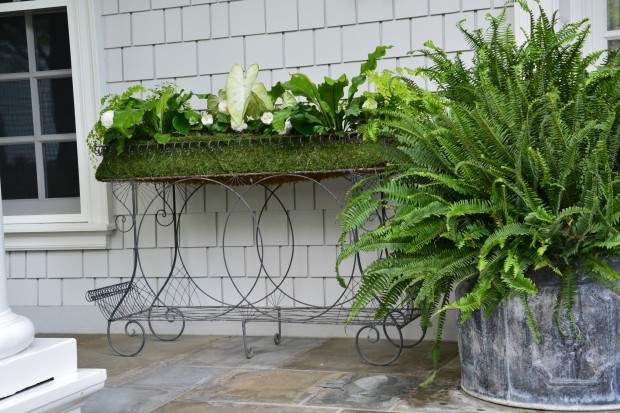 The plant stand is planted with white caladiums, bird’s nest ferns, white non stop begonias, Jayde pepperomia, and maidenhair ferns. The big lead pot is planted with a single Kimberly fern. Very quiet, and peaceful. Hopefully the story of these containers is evident in all of the choices. We will see how it reads in August.
The plant stand is planted with white caladiums, bird’s nest ferns, white non stop begonias, Jayde pepperomia, and maidenhair ferns. The big lead pot is planted with a single Kimberly fern. Very quiet, and peaceful. Hopefully the story of these containers is evident in all of the choices. We will see how it reads in August.
